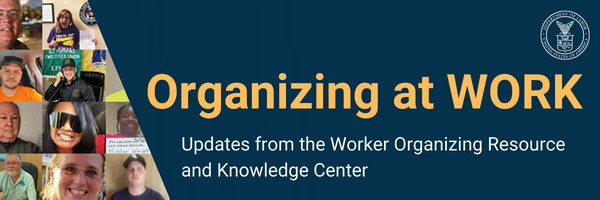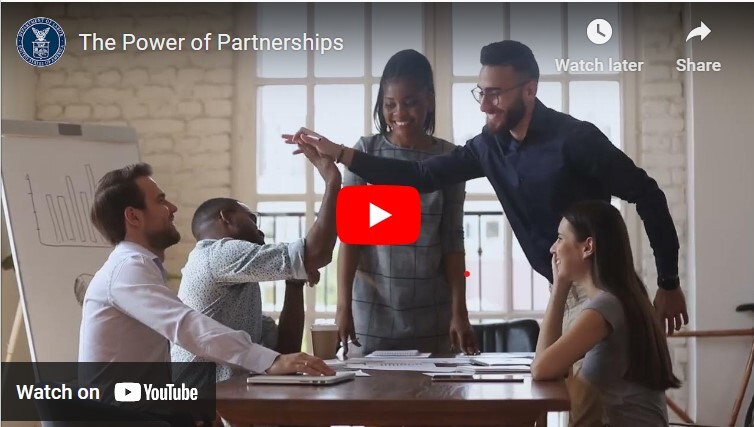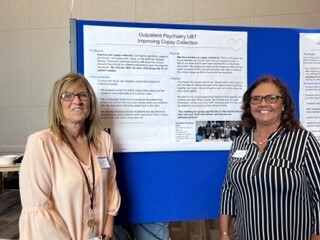|
 July 10, 2023
 Better understand how labor-management partnerships work and how they are beneficial for both workers and employers.
As we cross the one-year mark of the Labor-Management Partnership Program in the Office of Labor-Management Standards, we can say with confidence that we’ve played an important role in revitalizing the Labor Department’s efforts to underscore the importance of labor-management cooperation and how it can build pathways to good jobs and a stronger economy.
In this edition of Organizing at WORK, we celebrate real examples of successful labor-management partnerships and how they strengthen bonds between employers, unions and communities. If you have a similar story to share, we’d love to hear it.
Darnice Marsh, labor-management partnership coordinator in the Department of Labor’s Office of Labor-Management Standards.
Andrew Hasty, senior advisor on detail with the Department of Labor’s Office of Labor-Management Standards.
|
|

From featuring enlightening industry examples to engaging discussions on improving workplace dynamics, the past year has been filled with insightful revelations and significant strides. We can say with confidence that we’ve played an important role in revitalizing the Labor Department’s efforts to underscore the importance of labor-management cooperation and how they can build pathways to good jobs and a stronger economy.
Our latest event featured panelists representing healthcare, public transit, manufacturing and an education training fund. The event underscored the breadth of what labor-management partnerships can do and shared examples of successes to serve as inspiration and models for employers, unions, and workers to find creative and mutually beneficial ways to solve workplace issues important to both management and labor.

 |
|
Belonging and Excellence for All (BE4ALL) seeks to positively impact the industry’s work culture so that Sheet Metal and Air Conditioning Contractors’ National Association (SMACNA) contractors can attract and retain the best and most skilled workforce possible regardless of race, gender, religion, sexual orientation, ethnicity, or nationality.
Read and learn more from Be4All toolbox.
|
 |
|
ABC Federation of Teachers (ABCFT)’s handbook provides a detailed look at how a school district and the union achieved their successful partnership and offers suggestions that other school districts and employee unions can follow to reach a similar level of trust and collaboration.
Read the handbook.
|
 |
|
High Road Alliance’s (HRA) Equitable Apprenticeship Toolkit is a resource to help labor-management partnerships and others designing and running pre-apprenticeship and apprenticeship programs to intentionally encourage and support the inclusion of apprentices who reflect the full diversity of our communities.
View their Equitable Apprenticeship toolkit.
|

“I work at UMass Memorial Health, which is a 16,000-employee academic teaching hospital located in central Massachusetts. We describe the unit-based team (UBT) program as the crown jewel of our labor-management partnership. Not only do UBTs benefit staff, they also change how managers think about their own leadership and how they solve problems.”
- Mike Pacinda
|
|
 |

“The Labor-Management Partnership between the hospital and the SHARE union allowed us to be involved in a Unit Based Team (UBT) where I was comfortable talking about the challenges in the workflow. Thanks to UBT!”
“Being the supervisor has many challenges, but I have the great opportunity to still learn with the staff I work with each day by being on the Unit Based Team, gives me the opportunity to chat with staff and open up many conversations throughout the day.”
- Louise Bachand
|
Share your labor-management partnership story >>

-
Read how states, cities, and private sector applicants can improve their chances of new federal support through the Inflation Reduction Act, Bipartisan Infrastructure Investment and Jobs Act, and CHIPS and Science Act by demonstrating how they will create good jobs for working people.
This document contains links to information created and maintained by other public and private organizations. Please be aware that the U.S. Department of Labor does not control or guarantee the accuracy, relevance, timeliness, or completeness of this outside information. Further, the inclusion of links to particular items is not intended to reflect their importance, nor is it intended to endorse any views expressed or products or services offered by the author of the reference or the organization operating the site on which the reference is maintained.
|
|
|
|